
Walking through the Amsterdam City Centre is like travelling through time. From the early 1500s, when Amsterdam was still a small fishing village, to the Golden Age (1568-1672) and the city’s rise as a world empire, and then the nineteenth and twentieth century, ages of reconstruction and protest. Join us on a tour via the most famous landmarks in the Palace District, hidden treasures and museums. Stop at traditional bars and enjoy the collection of remarkable shops along the way.
A Perfect Walking Route through the Amsterdam City Centre
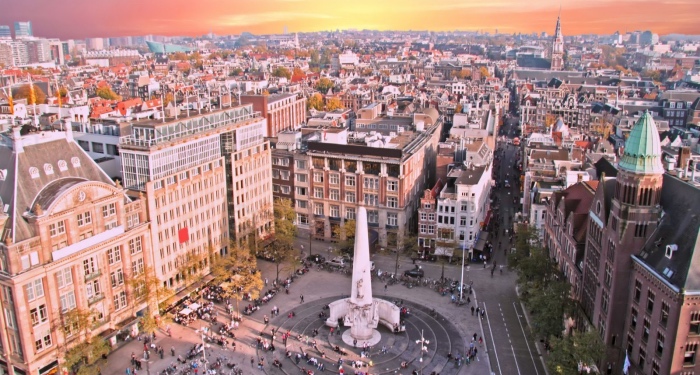
IJkade
We’ll start the walk through Amsterdam City Centre at the shores of t’IJ, the city’s former harbour where once many hundreds of galleons of the Dutch East India Company were anchored, waiting to trade their cargo in town. The barren northern shores in the east were mostly used to pile wood, grain and coal but today this area is mostly used as industrial festival area NDSM-Werf (with some trendy restaurants and bars). Right in front of us we can see the iconic white building of the Eye Film Institute (designed by Roman Delugan and Elke Delugan-Meissl). Behind that you’ll find the so-called Tolhuistuin – an artistic hotspot with bars, restaurant and regularly changing art expositions. The islands to our right, now boasts the glass façade theatre building of the Muziekgebouw aan t ’IJ as well as an excellent seafood restaurant, Zouthaven, and a huge summer terrace overlooking the IJ-river and the upcoming neighbourhood Amsterdam Noord. The Northern part of town is easily reached; boats leave every ten minutes or so at the back of Central Station.
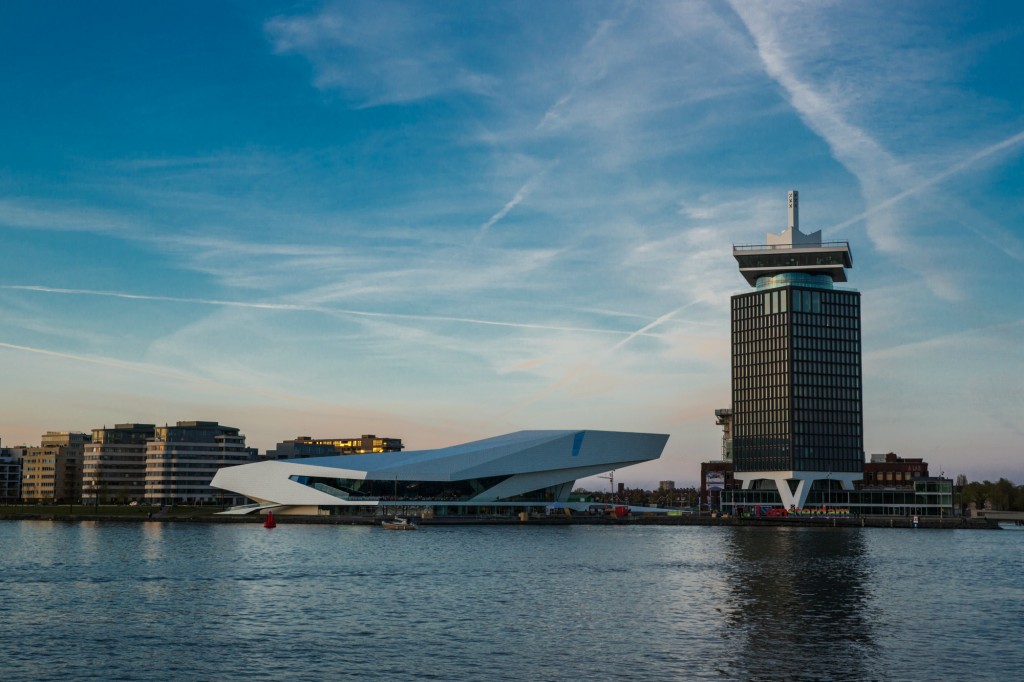
Central Station
There was a good chance that the monumental train station of Amsterdam was never built on its current location. Fearing for their trading, business owners heavily protested against the construction of the station island in the old port and thus the closing of the city to the main waterways and the sea. Petrus Cuypers’ design was mostly inspired by the Dutch Middle Ages (he also made the construction plans for the monastery-like Rijksmuseum), which was a long time before the age of the prosperous maritime trade. The newly unveiled giant tiled wall (consisting of 70,000 hand-painted tiles) in the Cuypserspassage though is a fair tribute to Amsterdam’s seafaring past. The fairytale wooden café on the waterfront at the central entrance of the station, once a pleasant waiting area for travellers, now houses a branch of the famous Amsterdam steak restaurant Loetje.
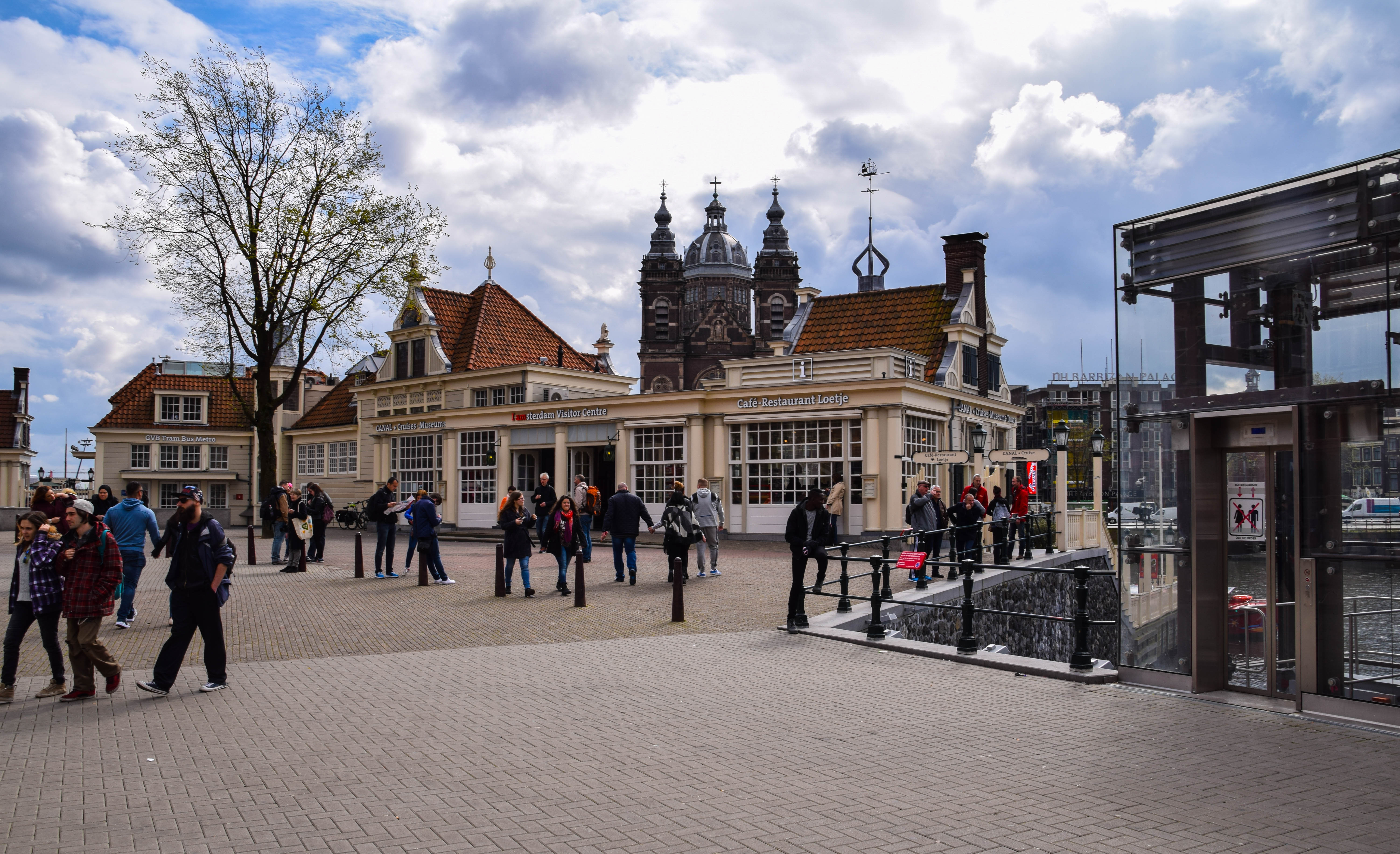
Damrak
Getting around in Amsterdam is quite easy. Standing in front of Central Station, facing Damrak and at the back Dam Square, one can easily divide the city into the old side (Oudezijds, to the left) and the new side (Nieuwezijds, including the Canal District and Jordaan area, to the right). Also on the right is St. Nicolaaskerk – named after the patron saint of fishermen, children and the city of Amsterdam – a majestic church built in different styles (so as not to offend any religious movement in the city at the end of the nineteenth century). As we walk towards Dam Square, we’ll find café De Heffer at our right (once the place where marketable goods were weighed), and after that Beurs van Berlage (the central location of the Dutch Royal marriage in 2002). Once intended as a showcase of Dutch grandeur, the original draft of the design was rejected because it was supposedly stolen from the architects of the town hall of Rochelle in France. The municipality eventually settled for the industrial drawings by architect Hendrik Petrus Berlage.
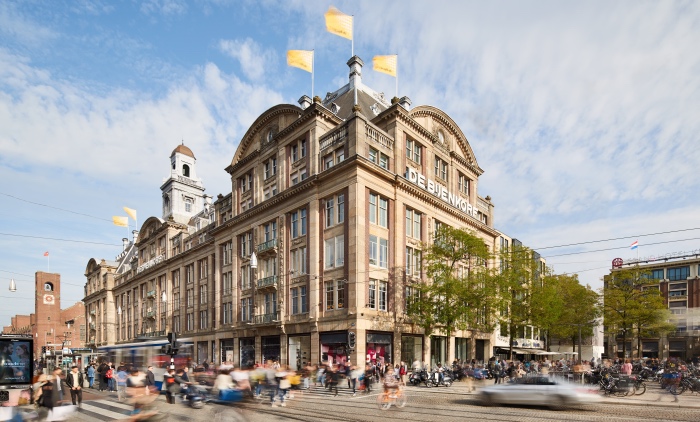
Dam Square
The site where the 58-year-old palatial department store De Bijenkorf is situated now originally belonged to the world-famous Beurs van Berlage – the first stock exchange in the world and later the classical building of De Beurs van Zocher. Ever since the building of the dam in the river Amstel over 800 years ago, the square has been the centre of the city. Not surprisingly, citizens of the Dutch Republic (with which the Dutch were again the first in the world) chose this spot as the building site for their magnificent town hall in the 1600s. In 1808, however, the colossus was transformed into the residential Palace for the royal rulers in the Netherlands. The grand church next to the Royal Palace is De Nieuwe Kerk, which is used for national commemorations and major expositions. We’ll stop for a moment at the almost 350-year-old distillery of Wijnand Focking in the (recently) covered Pijlsteeg right across Dam Square, to enjoy a glass of real Dutch gin or another locally distilled specialty.

Nes
In the 1500s this narrow street hosted as many as five monasteries. Residents, who were required to make a quick prayer when passing each monastery, nicknamed it ‘the never-ending prayer’. By the nineteenth century, most of the holiness had left Nes; the street became the centre of the capital’s nightlife with many emerging theatres, bars, restaurants and brothels. Bubbles & Wines is known for its immense selection of rare and valuable grape juices and tasty snacks. A must visit is Bridges, a restaurant that prides itself on serving sublime fish dishes in a unique atmosphere.
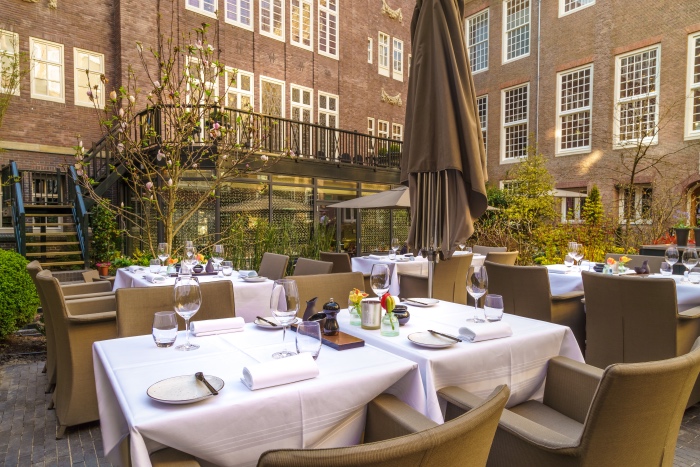
Rokin
At the end of Nes, we’ll turn right to end up in the middle of Rokin. After two centuries of stagnation, the nineteenth century was again a period of growth for Amsterdam – thanks mostly to the rise in colonial trade. In those days Rokin served as an elegant boulevard with numerous exclusive department stores and (secret) club houses for the rich and famous. One of the very few remaining businesses is tobacco firm Hajenius (halfway down Rokin), where we can still enjoy homemade cigars in the atmospheric lounge. The grey building on the other side of the canal was built as the headquarters of the Dutch National Bank but now serves as a repository of the university collection of ancient art, the Allard Pierson Museum.
Damstraatjes
Don’t be fooled by the limited width of Oude Hoogstraat; this was once one of the richest passages in town. The powerful Dutch East India Company (VOC) even established its head office here: Het Oost Indisch Huys. The building, and in particular the beautiful courtyard and richly decorated boardroom, are open for visitors. De Waalse Kerk, a church built for Belgian and French religious refugees in 1578, is located further up the road. Be careful not to pass the narrowest house in Europe at Oude Hoogstraat 22 (approximately just 2 metres wide).
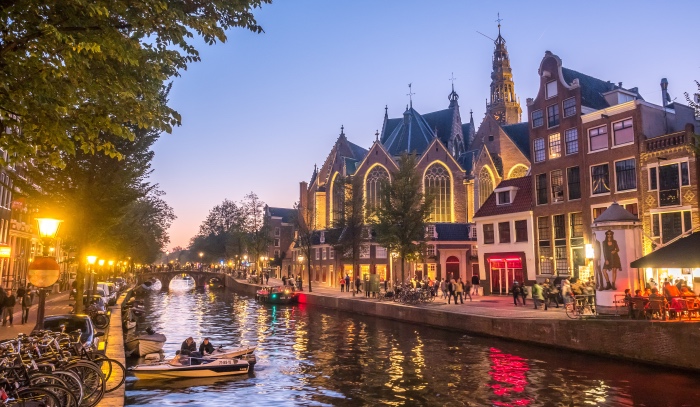
Oudekerksplein
As we walk back to the red light district, we pass De Oude Kerk (the old church) on the left of Oudezijdsvoorburgwal, the oldest building in Amsterdam. This imposing late-medieval building now serves as an exhibition space (and is known as the home of World Press Photo). In the presbytery (De Koffieschenkerij), on the waterfront, coffee master Job Oosting serves delicious coffee, tea and homemade cake in the traditional dark-toned room of the building.
Zeedijk
A couple minutes away, we arrive at the beginning of Zeedijk. The wooden building on the left, at number 1, is t’Aepje – one of the oldest existing taverns in town. It is said that a visit to this inn was quite risky because of the lice-infested monkey (donated by a sailor in debt). There is still a Dutch saying that refers to the bar: ‘you’ve stayed at t’ Aepje’ – meaning that you’ve probably come across trouble. A couple of minutes down the road, Zeedijk changes into Amsterdam Chinatown. The tasty specialty Nua Nam Tok, a delicious rib-eye salad with glass noodles and local herbs, is worth the wait at the always-crowded Thai snack bar and restaurant The Bird. At neighbouring four-storey Nua Nam Tok, you can find ingredients, cooking utensils, dishes, teapots and even Asian art. The beautiful, newly constructed He Hua Buddhist temple serves as places of worship for local Chinese.
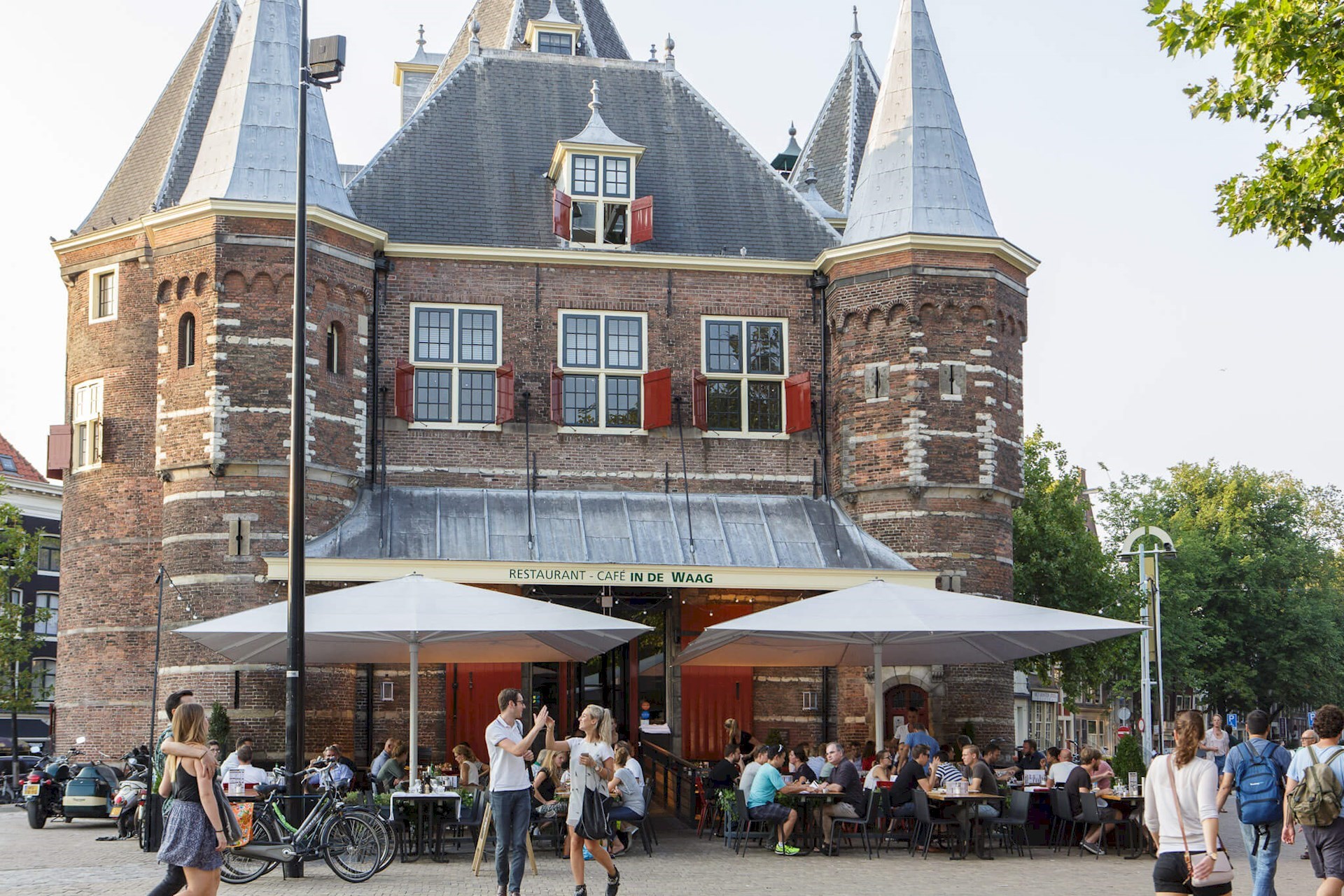
Nieuwmarkt
Nieuwmarkt, located at the end of Zeedijk, was the scene of heavy protests against the construction of a new subway line in the seventies and eighties. Unfortunately, angry residents and protesters could not prevent part of the late medieval city being demolished. De Waag, in the middle of Nieuwmarkt, built as the Amsterdam City Centre gate in the 1500s and later used as clubhouse for the powerful guilds of Amsterdam, now houses an attractive grand café. Also worth a visit is traditional Amsterdam ‘brown bar’ Cafe Fonteyn to the right. Cafe Bern right behind De Waag is famous for its Swiss cheese fondue and chopped sirloin steak with delicious sauce.
Staalstraat
We now move from Nieuwmarkt to Staalstraat, a recently-blossomed shopping street with many attractive and creative boutiques. Droog offers a variety of dinnerware, lamps, plants and many special gadgets. Neighbouring Papabubble is an authentic candy maker that specializes in candy prepared according to ancient recipes. When we’ve finished shopping, we stop for a beer and a traditional cheese platter in the old drugstore (with a Moorish bust attached to the façade) De Gaeper.
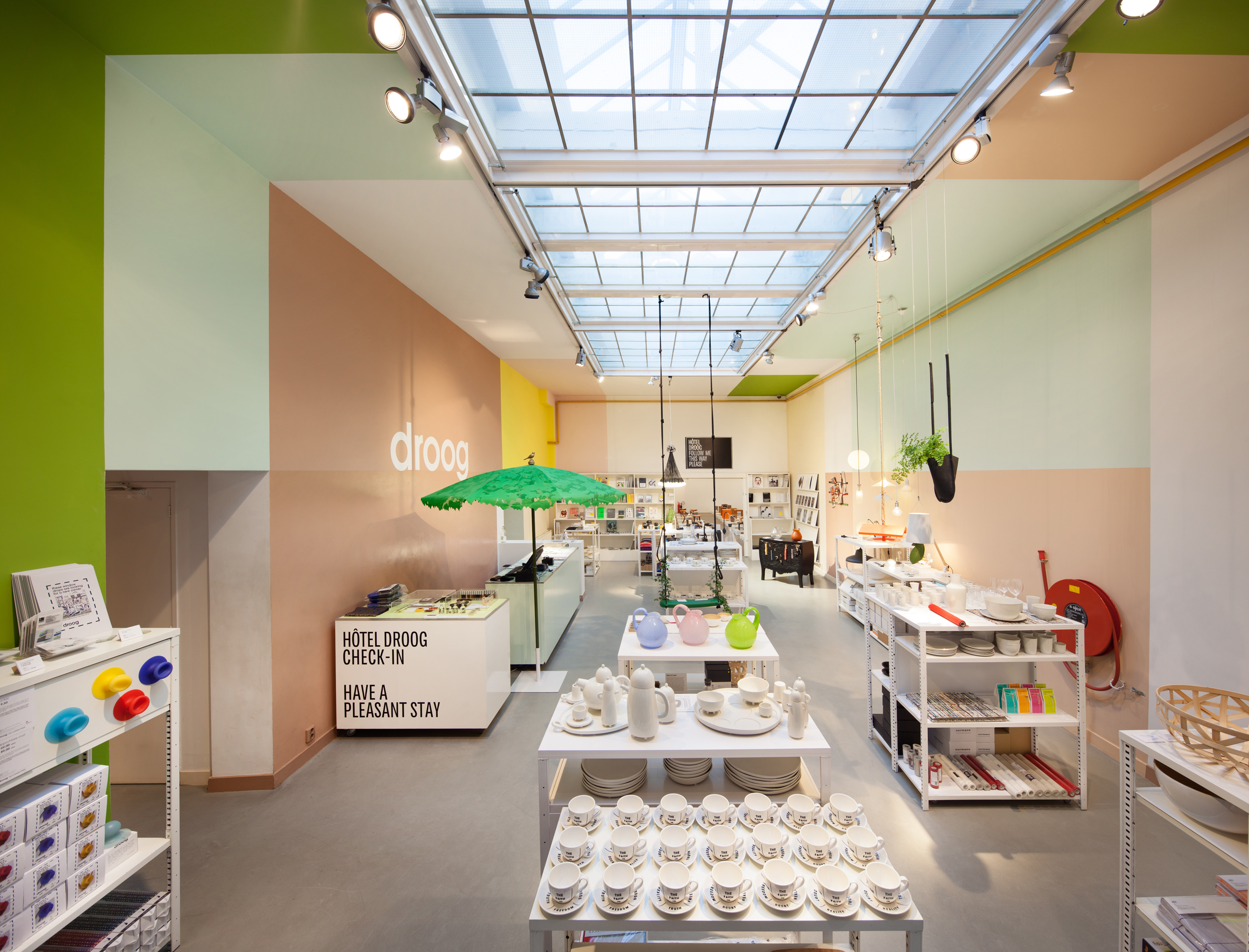
Waterlooplein
Through the Staalmeestersbrug – packed with padlocks left by couples in love (following the example of Pont des Arts in Paris) – we arrive at the Waterlooplein, once the bustling centre of the old Jewish quarter of Amsterdam. Though little is left of the characteristic narrow streets with often dilapidated houses, the Portuguese Israelite Synagogue (one of the first and largest of its kind in Western Europe) remains one of the last landmarks of Jewish culture in Amsterdam. Nowadays, the next door seventeenth-century Great Synagogue and Abbene Shul operate as the Jewish Historical Museum.
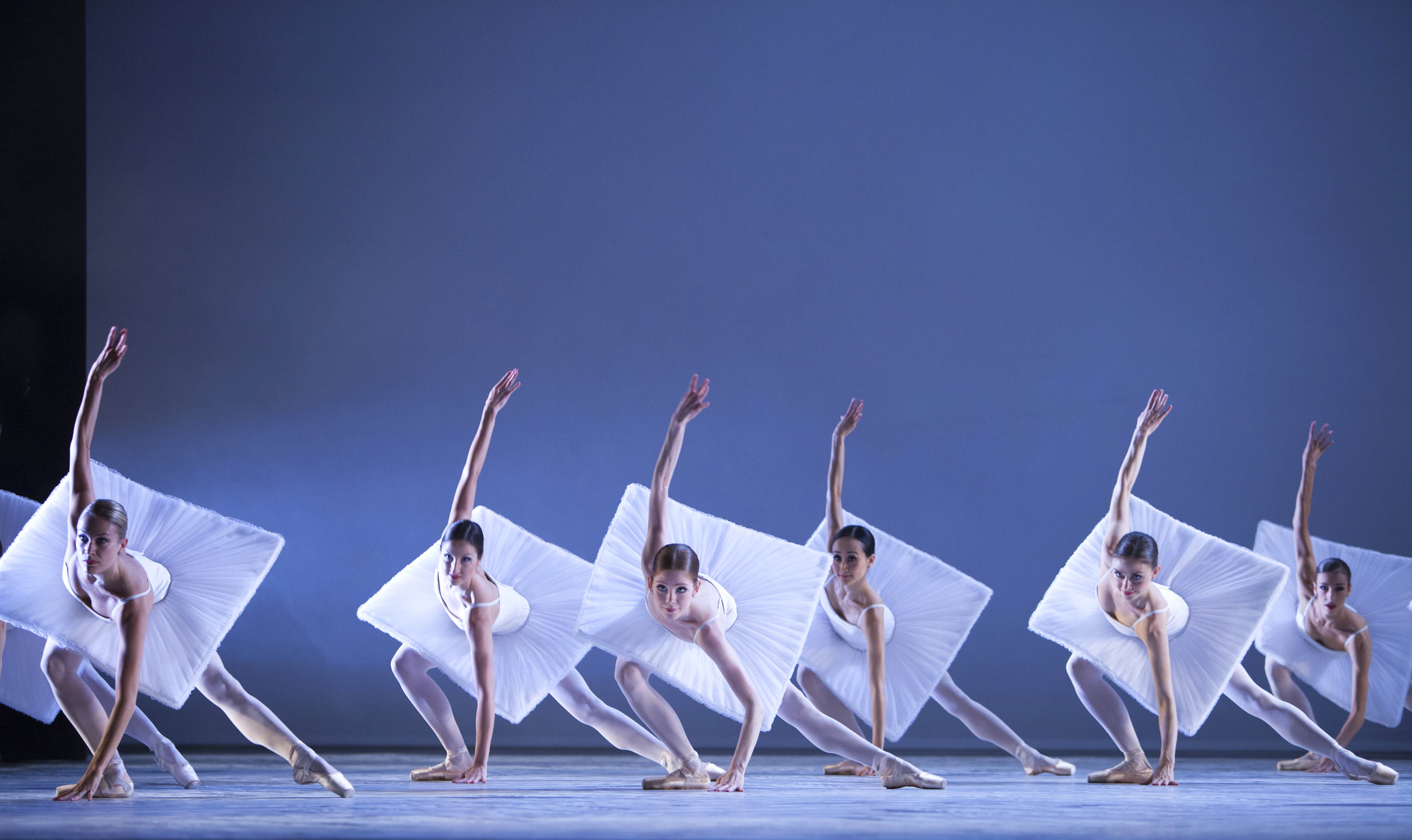
The rest of Waterlooplein is now dominated by the modern red brick and white marble colossus of the Stopera (City Hall – Stadhuis and The Dutch National Opera & Ballet House) and the flea market. The flea market is open every day (expect Sunday) and is a must-see for lovers of curios, antiques, unique second-hand clothing and souvenirs. Do save time to visit the Rembrandthuis, the former working space of Rembrandt van Rijn, on Jodenbreestraat (Jewish broadway, parallel to Waterlooplein) which can now be visited as a museum dedicated to etches and drawings of the Dutch master.

Most Popular
-

Extra
Best All You Can Eat Restaurants Amsterdam
XX
-

Extra
15 Best Restaurants in the Jordaan Amsterdam
Discover Amsterdam
-

Extra
9 Best Thai Restaurants in Amsterdam
Discover Amsterdam
-

Extra
Best Spas in Amsterdam
Discover Amsterdam
-

Extra
Best Asian Restaurants Amsterdam
Where to go for the tastiest Asian dishes, traditional sushi and the freshest sashimi

Extra
Jordan Wolfson
This winter Stedelijk Museum presents Jordan Wolfson (New York, 1980), one of the most outspoken representatives of a…
Amsterdam Centrum

Extra
The Third House Owner at Huis Marseille
The Huis Marseille is a very old building, 353 years old to be exact. With an house that…
Amsterdam Centrum

Extra
Scandinavian Embassy
There are plenty of outstanding coffee bars in Amsterdam West. One of the frontrunners is Lot Sixty One.…
Amsterdam Centrum

Extra
9 Free Things to do in Amsterdam
Amsterdam isn't the most expensive city in Europe, but don't the best things in life come for free?…
Amsterdam Centrum

Extra
Blond Amsterdam
What started as a small workshop operated by two friends on Spuistraat in 2001 has grown into one…
Amsterdam Centrum

Extra
L’Atelier du champagne
From lush vineyards to flawless glassware, at L’Atelier du Champagne, they make every sip matter. Their philosophy is…
Amsterdam Centrum

Extra
The 15 best things about Amsterdam
Amsterdam is one of the most magical cities in the world, but what is the magic of Amsterdam.…
Amsterdam Centrum



